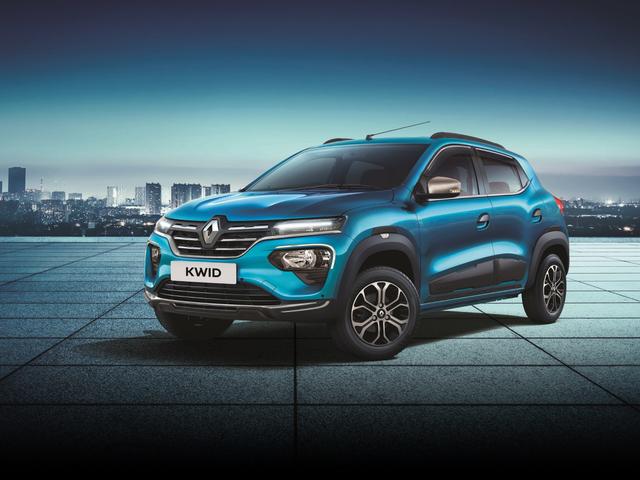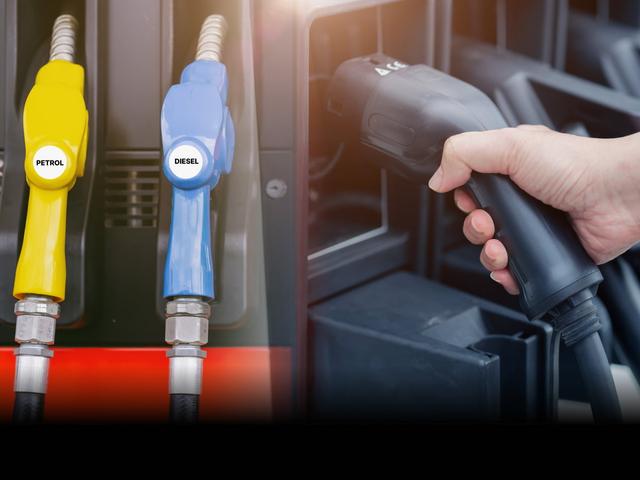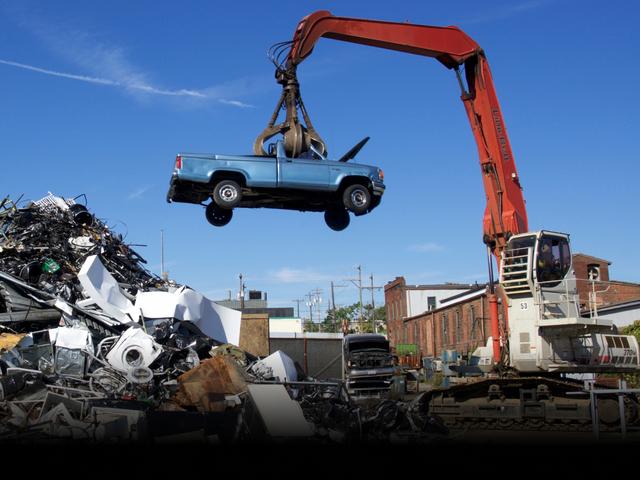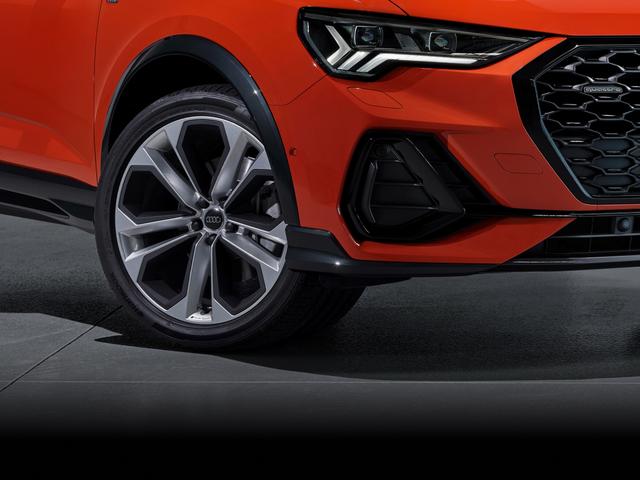As societal needs change, new traffic regulations are introduced, but traffic signs in India remain vital in providing essential visual cues that guide drivers in adhering to these rules, ensuring orderly and safe traffic flow. But traffic signs are not only important for the drivers and the potential drivers. Whether you're behind the wheel, walking along the footpath, or pedalling on a bicycle - it is important for all road users to pay attention to the traffic signs to ensure your safety and the safety of others on the road.
To stay informed about the latest regulations and penalties, you can check out this detailed guide on new traffic rules and violation fines in India.
Traffic signs are designed keeping principles of simplicity and attention in mind. The design uses shapes and colours to attract attention, and symbols to convey vital information without words, in order to eliminate language barriers.
We explore and explain the meanings of road markings, traffic rules and traffic signs in India.
How are the traffic signs in India designed?
Designing a traffic sign is a complex combination of science and art. The main objective of a traffic sign is to convey complex information as quickly and clearly as possible. Therefore, the traffic signs are designed to attract maximum visibility and provide quick comprehension to the drivers. For this purpose, the design focuses on using high visibility colours, eye-catching shapes, and universally identifiable symbols.
On one hand, it includes identification of user needs, and on the other, the design also needs to adhere to the psychology of colour and shapes to create traffic signs that are functional, intuitive, and cater to the diverse needs of all road users.
Before we begin discussing the shapes and sizes of the traffic signs, let us first begin by understanding the types of boards on which the traffic signs are made. In terms of print surface, there are two primary types of sign boards in India:
- Reflective sign boards: Most commonly used sign boards for traffic signs in India, use reflective sign boards designed in a way that they reflect light from passing cars, making them highly effective in low-light conditions. It is made by crimping a reflective sheet over an aluminium plate, a durable and rust-free medium, making it a preferred choice for the highways.
- Internally illuminated sign boards: More common in city traffic, internally illuminated sign boards use LEDs or fluorescent lights and provide consistent visibility, even from a distance, regardless of external lighting conditions.
These two types of sign boards form the majority of modern road signage.
What is the standard size of traffic sign boards in India?
In India, the size of traffic signs are prescribed by the Order on Traffic Signs, Partition Lines, and Road Markings, which is also known as the Sign Ordinance. This ordinance establishes installation standards, methods, and recommendations, which are further refined by specific guidelines from expressway operators for highways. The height, or clearance, between the road surface and the bottom edge of a traffic sign varies. The sizes may also vary based on the area, speed limits, and the type of signs they are supposed to indicate.
Road signs fall into different categories with specific standard sizes. Three broad categories of traffic road signs, with their expressway dimensions, are given below (dimensions vary for highways, expressways and city roads as recommended by the Ministry of Road Transport and Highway of India):
Mandatory signs:
- For roads with speed limit between 81-120 km/h, the diameter of mandatory signs should measure 1200 mm with a 100 mm border
- For roads with speed limits between 121-150 km/h, the diameter of mandatory signs should measure 1500 mm with a 125 mm border
Cautionary or Warning Signs:
- For roads with speed limits between 81-120 km/h, the diameter of mandatory signs should measure 1200 mm with a 90 mm border
- For roads with speed limits between 121-150 km/h, the diameter of mandatory signs should measure 1500 mm with a 110 mm border
Informatory or Instruction Signs:
These signs are further categorised as Overhead Direction Signs and Flag Type Directions Signs. The board diameters may vary; however, the text sizes need to be uniform in this category. The text sizes prescribed are as follows:
- For speed limits between 101-120 km/h:
- The Overhead Direction Signs should have the following text height: 1) 330mm in lower case, and 2) 460 mm in upper case.
- The Flag Type Directions Signs should have the following text height: 1) 245 mm in lower case, and 2) 345 mm in upper case
- For speed limits between 121-150 km/h:
- The Overhead Direction Signs should have the following text height: 1) 380mm in lower case, and 2) 530 mm in upper case.
- The Flag Type Directions Signs should have the following text height: 1) 270 mm in lower case, and 2) 380 mm in upper case
The text thickness in all cases should be 50 mm for roads with speed limits between 101-120 km/h, and 60 mm for speed limits between 121-150 km/h.
These dimensions are made mandatory keeping in mind the location specific visibility and the gravity of importance of the information conveyed.
Types of traffic signs or road safety signs
.jpg)
In terms of functionality, there are five main types of traffic signs, or road safety signs in India, namely mandatory signs, cautionary signs, informatory signs, guide signs, and auxiliary signs. Each of these categories serves a specific purpose and are useful in different locations and convey differing gravity of information to the road users.
- Mandatory signs:
- These signs are also known as regulatory signs
- Drivers are legally obligated to obey these signs, failing which they can be fined.
- Typically, these have white background with red borders and are circular shaped
- Some of the most common signs are - Stop, No Entry, Give Way, Horn Prohibited, Speed Limit, No-U-turn, No Parking
- Cautionary signs:
- These signs are also known as warning signs
- These primarily serve the purpose of alerting drivers to potential hazards on the roads
- Typically, these signs have a triangular shape and have red edges
- Some of the most common signs are - Sharp Curve Ahead, Narrow Bridge, Hairpin Bends, Steep Descent/Ascent, Slippery Road
- Informatory signs:
- These are also known as instruction signs
- These provide location specific information and are particularly helpful for new users in the area
- These are blue-coloured, and rectangular shaped
- Some of the most common signs are - Petrol Pump, Hospital, Thoroughfare, Parking, First Aid Post
- Guide signs:
- These can be considered a subcategory of informatory signs.
- These signs provide navigational assistance to help drivers on long routes and highways.
- Some of the most common signs are - Route markers, Destination signs, Mileposts, Toll booth signs.
- Auxiliary signs:
- These can be considered a subcategory of cautionary signs.
- These signs supplement the main signage system, offering additional information or warnings.
- Some of the most common signs are - Detours, Road Closure signs, or Men at Work signs.
In India, only the first three categories are considered core categories of traffic signs, and the last two categories are complementary to one of the three, as described above.
Mandatory traffic signs: Indian road signs you must follow
.jpg)
The most important of all the road safety signs, mandatory traffic signs in India play a crucial role in maintaining road safety and order. Therefore, it is essential for every driver to understand and respect these signs and their meanings. Below, we’ve broken down some of the most important mandatory signs for you, along with their meanings and interpretations:
- Stop:
- This is the most unique road sign, easily identifiable from a distance due to its colour and shape and colour - red and octagonal.
- This sign needs the driver to come to a complete stop and is essential for ensuring pedestrian safety and preventing accidents at intersections.
- No entry:
- This sign marks an area as restricted and prohibits the vehicles from entering.
- Violating this sign can lead to legal penalties, apart from other safety risks for drivers and pedestrians.
- Give way:
- This sign instructs the drivers to allow passage to traffic coming from the right.
- Following this sign helps avoid collisions and ensures smooth traffic flow.
- Pedestrian prohibited:
- This sign demarcates an area as restricted to pedestrians and disallows walking in that area.
- Pedestrians are thus advised to use alternative routes to ensure their safety.
- No parking:
- This sign restricts the parking of a vehicle in specific areas.
- This is a necessary road sign that helps in ensuring smooth traffic flow by preventing random and jay parking.
- Horn prohibited:
- This sign prohibits honking in certain areas, and is especially found around residential areas, hospitals, and schools.
- This is a necessary intervention to maintain a peaceful outdoor environment and keep noise pollution in check in cities.
- No stopping or standing:
- This sign prohibits vehicles from randomly stopping or parking at areas not designated as parking spots.
- This is another important sign to help prevent traffic congestion in areas prone to traffic jams.
- Speed simit:
- Indicates the maximum speed limit for a particular section of road.
- Crucial for preventing accidents and ensuring safe driving conditions.
- Roundabout:
- Warns drivers of an upcoming circular intersection.
- Drivers must follow roundabout rules to navigate safely and efficiently.
These mandatory signs are fundamental to road safety in India, guiding drivers to make informed decisions and ensuring the well-being of all road users. Understanding and adhering to these signs can significantly reduce the risk of accidents and improve overall traffic management.
Cautionary road signs: Warning signs of what is up ahead
.jpg)
Safety is paramount for any driver on the road, and cautionary signs play a crucial role in guiding and alerting drivers to potential hazards. These signs, with their distinct shapes and colours, quickly convey important warnings. Here are some common cautionary traffic signs in India and their meanings:
- Right-hand curve:
- Warns of an upcoming right-hand curve.
- Drivers should slow down and navigate the curve carefully.
- Left-hand curve:
- Similar to the right-hand curve sign, indicating a left-hand curve ahead.
- Essential to reduce speed and proceed cautiously.
- Right hairpin bend:
- Indicates a sharp right turn.
- Drivers must approach these bends slowly to avoid accidents.
- Left hairpin bend:
- Signifies a sharp left turn.
- Important to slow down and handle the turn with caution.
- Right reverse bend:
- Warns of a zigzag turn to the right.
- Drivers should maintain a safe distance and proceed carefully.
- Left reverse bend:
- Similar to the right reverse bend, indicating a zigzag turn to the left.
- Drivers must navigate with care.
- Steep ascent:
- Alerts drivers to a steep upward slope ahead.
- Necessary to slow down and gear appropriately to prevent engine overload.
- Steep descent:
- Indicates a steep downward slope.
- Drivers should slow down and avoid speeding down hill.
- Narrow road ahead:
- Warns that the road ahead narrows.
- Drivers should slow down and give way to oncoming traffic.
- Road widens ahead:
- Indicates the road will widen.
- Drivers can safely speed up and overtake if conditions allow.
- Narrow bridge:
- Warns of a narrow bridge ahead.
- Drivers should cross the bridge cautiously at a reduced speed.
- Slippery road:
- Indicates gravel or loose earth making the road slippery.
- Drivers should slow down to avoid skidding.
- Cycle crossing:
- Signifies a designated area for bicycles.
- Drivers should slow down and yield to cyclists.
- Pedestrian crossing:
- Indicates an area for pedestrians to cross.
- Drivers must slow down and give way to pedestrians.
- School ahead:
- Warns of a nearby school.
- Drivers should slow down and drive cautiously in these areas.
- Men at work:
- Indicates roadwork ahead.
- Drivers should slow down and follow traffic personnel instructions.
- Cattle:
- Warns of the possibility of cattle on the road.
- Drivers should proceed with care and give way to cattle.
- Falling rocks:
- Indicates a road prone to falling rocks.
- Drivers should slow down and navigate cautiously to avoid accidents.
By understanding and obeying these cautionary signs, drivers can significantly enhance their safety and the safety of others on the road.
Informatory road signs: Signs of nearby conveniences
.jpg)
Informatory road signs may not be mandatory, but they play a crucial role in ensuring smooth and stress-free journeys by providing essential information to drivers. Here’s a breakdown of some common informatory traffic signs and their meanings:
- Public telephone:
- Indicates the presence of a nearby public telephone.
- Useful for making urgent calls if you don’t have a mobile phone.
- Petrol pump:
- Guides drivers to the nearest petrol station.
- Vital for refuelling when your fuel gauge is running low.
- Hospital:
- Signifies the location of a nearby hospital.
- Essential in case of medical emergencies.
- First aid post:
- Indicates a nearby first aid facility.
- Useful for basic medical attention.
- Eating place:
- Points to the nearest restaurants or cafes.
- Helpful when you need to stop for a meal.
- Resting place:
- Signifies a nearby resting area.
- Perfect for taking a break from driving and relaxing.
- No thorough road:
- Indicates that the road has no exit.
- Advises drivers take an alternative route.
- No thorough side road:
- Signifies that the side road has no thorough passage.
- Best to avoid this route to prevent getting stuck.
- Park this side:
- Guides where to park your vehicle.
- Ensures you find a suitable parking spot easily.
- Parking lot scooter and motorcycle:
- Indicates a parking area designated for scooters and motorcycles.
- Useful for two-wheeler riders looking for parking.
- Parking lot - Cycle:
- Signifies the parking area for bicycles.
- Ensures cyclists have a designated spot to park.
- Parking lot - Cars:
- Points to a car parking area.
- Helpful for car drivers to locate parking spaces.
By familiarizing yourself with these informatory signs, you can enhance your driving experience, ensuring a more convenient and stress-free journey on the roads.
Why is it crucial for kids to know traffic signs?
.jpg)
Traffic signs are not only vital for drivers but also for children and students who are pedestrians. Understanding these signs can significantly enhance their safety on the road. Here are some essential traffic signs that kids and students should be familiar with:
- STOP sign:
- Description: A red, octagonal-shaped sign that instructs drivers to come to a complete stop.
- Importance for Kids: Children must learn to recognize this sign and understand that they should always stop, look left, right, and left again before crossing the road. This habit ensures they are aware of any oncoming vehicles, enhancing their safety.
- School crossing sign:
- Description: A yellow-green, diamond-shaped sign indicating the presence of a school nearby and potential child pedestrians crossing the road.
- Importance for Kids: This sign alerts children to be extra cautious and attentive to incoming vehicles when near schools. They should always use designated zebra crossings and look both ways before crossing the road.
- Pedestrian crossing sign:
- Description: A triangle-shaped, white board with red borders, it tells the driver to slow down for pedestrians to cross. In addition, it also informs the pedestrians from a distance about the presence of a crossing, more commonly known as zebra crossing in India.
- Importance for Kids: This is usually the first sign that the kids learn about, when they start learning about road etiquettes. It is an important sign for kids to learn about crossing the roads safely.
By understanding and adhering to these traffic signs, children can significantly enhance their safety as pedestrians. It also helps them develop good habits that will be crucial when they eventually become drivers themselves.
Importance and functions of traffic signs
Traffic signs play a crucial role in ensuring safe and efficient travel on Indian roads. Importance of road signs ranges from providing instructions to drivers, guiding them through lane usage and speed limits, to warning about potential hazards and maintaining order, and smooth traffic flow across the country. They serve several key functions, which can be categorised as follows:
- Ensuring smooth traffic flow: Traffic signs facilitate the smooth movement of vehicles and help prevent congestion on busy roads.
- Enhancing road safety: They are vital in preventing accidents and saving lives by warning drivers about potential hazards and regulating traffic flow.
- Providing essential information: Traffic signs inform drivers about the road ahead, including directions, speed limits, parking areas, and nearby facilities.
- Promoting road discipline: They enforce road rules and regulations, guiding drivers to maintain discipline and follow traffic laws.
- Navigational aid: For new drivers and travellers, traffic signs provide essential guidance for navigating routes and reaching destinations safely.
The traffic sign system in India is regularly updated by the authorities to ensure a well-organized traffic management system. Various types of traffic signals are used, including hand signals by traffic police, pavement markings, and traffic light signals. By adhering to these signs, drivers not only comply with the law but also contribute to reducing accidents.
Under the New Motor Vehicle Act of 2019, stringent penalties are imposed for traffic violations, underscoring the importance of awareness and adherence to traffic signs. Knowing and following these signs not only promotes road safety but also contributes to a more orderly and harmonious driving environment in India.
Enhancing road safety: Additional traffic signs and signals in India
In addition to fixed roadside traffic signs, India employs various supplementary signals and markings to enhance road safety and streamline traffic flow. These additional signs play a critical role in guiding drivers, ensuring pedestrian safety, and maintaining order on the roads.
Hand signals by Traffic Police
Hand signals by traffic police officers are indispensable for managing traffic at intersections and accident sites. These gestures provide real-time guidance to drivers and pedestrians, ensuring smooth traffic flow and minimizing congestion. Some important signals are as follows:
- Right hand stretched out with palm facing front and making a wave gesture from the other arm to stop one side of the vehicle, and let the other side pass through, and vice versa.
- Right hand raised in front, with palm facing front. This indicates that the vehicles coming from the front must stop.
- Left hand stretched out, with palm facing backwards. This sign indicates to the vehicles coming from behind to stop.
- Right hand raised in front with palms facing front and left hand stretched out with palm facing backwards. This gesture indicates to the vehicles approaching from front and behind to stop.
- Left and right arms raised, with palms facing either side. This sign is used to stop vehicles coming from left and right directions, simultaneously.
- Right hand raised to the front, with palm facing frontwards, and the left arm bent in front of the chest and sweeping in and outwards gently. This indicates to the vehicles coming from the left side to start moving. Vice versa for the traffic approaching from the right.
- Both hands lifted at shoulder level, and half bent towards the head, creating a diamond like shape. This sign indicates change.
Hand signals by drivers
Hand Signals by Drivers: Drivers use hand signals to communicate intentions effectively on busy Indian roads. These signals supplement vehicle indicators, helping to navigate through traffic and ensure safety during turns, stops, and emergencies. Some important signs are as follows:
- Right turn signal: Right arm extended out, with palm facing front, before turning right.
- Left surn signal: Right arm extended out, folded at the elbow pointing up, before turning left.
- Stop signal: Right arm extended and raised vertically, to alert the following drivers before stopping.
- Slowing down signal: Right arm extended, and gently swung up and down.
- Lane changing signal: Extending the right arm and rotating clockwise if changing to the right lane and anti-clockwise, if changing to the left lane.
Road marking or pavement marking signs in India
.jpg)
Road marking or pavement marking signs: Road markings are crucial visual aids that complement traffic signs. They delineate lanes, warn of hazards, and guide drivers through complex intersections. Understanding these markings is essential for safe and efficient driving across varied road conditions. Some important signs according to Delhi Traffic Police are as follows:
Centre line:
- These are white-coloured, broken lines, dividing the road into two for opposing traffic. These lines can only be crossed for overtaking, if the incoming lane is clear.
Solid white/yellow lines:
- Solid white or yellow coloured, lines divide the road into two lanes. Crossing these lines, or overtaking is strictly prohibited.
White signs:
- These lines inform the driver to slow down and are typically found near schools, colleges, or hospitals. These markings are usually supplemented with a speedbreaker.
Small broken white lines:
- These lines demarcate lanes on a road between left lane, middle lane and right lanes.
Parking prohibited lines:
- There are two kinds of parking prohibited lines: continuous single yellow/white lines and continuous single yellow/white lines. Single lines indicate no parking allowed, but stopping is allowed. Whereas, double lines mean neither parking, nor stopping is allowed.
Stop line:
- These are single solid transverse lines that are found at intersections. The drivers are expected to stop before this line at signals if the light is red.
Zebra crossing lines:
- These are thick, alternate black and white stripes, and indicate the designated area for pedestrians to cross. Usually found at the traffic signals, or at the top of the lanes, or junctions, vehicles must stop before zebra crossings to allow pedestrians to pass.
Box junction:
- These are rectangular boxes with yellow crossed diagonal lines, meant to indicate that the vehicles must not stop within this box.
Road rage in India
.jpg)
Road rage is a growing concern on Indian roads, underscored by alarming statistics. Globally, several researchers have pointed out aggressive driving as the main contributor to traffic fatalities. The escalation of road rage incidents in India reflects a concerning trend of reckless behaviour on roads. Triggered by stress, impatience, and frustration, road rage poses a significant threat to public safety, creating hazardous conditions for all road users.
According to India’s Ministry of Road Transport and Highways, there were 1,55,000 road rage accidents in 2019, increasing to 1,83,000 cases in 2020, and further rising to 2,15,000 incidents in 2021. This upward trend highlights the urgent need for measures to curb aggressive driving behaviours that endanger lives. These actions not only jeopardize the safety of drivers but also put pedestrians, cyclists, and other road users at risk.
In this milieu, traffic signs serve a very important function by enforcing road discipline and setting expectations for safe driving practices. They remind drivers to maintain appropriate speeds, yield to pedestrians, and follow lane markings, fostering a structured environment that discourages reckless behaviour. When drivers consistently adhere to traffic signs, they contribute to smoother traffic flow and fewer opportunities for conflict or aggression. In essence, traffic signs serve as proactive tools for preventing road rage by promoting a culture of respect, patience, and compliance with road rules.
Conclusion
In conclusion, traffic signs in India are not merely symbols on the road; they are essential safeguards that promote safety, order, and harmony among drivers. As we navigate the complexities of urban and rural roadways, traffic signs provide guidance, prevent potential conflicts and promote a culture of responsible driving. By adhering to these signs, drivers not only ensure their own safety but also contribute to the safety of pedestrians, cyclists, and fellow motorists.
Let's remember that every stop, yield, and speed limit sign plays a crucial role in preventing road rage, reducing accidents, and ultimately making our roads safer for everyone. Embracing the importance of traffic signs is not just about compliance; it's about cultivating a mindset of mutual respect and collective responsibility on the journey toward safer roads in India.










-(1).jpg&w=828&q=75)

.jpg&w=828&q=75)



-(1).jpg&w=828&q=75)

.jpg&w=828&q=75)
.jpg&w=828&q=75)

.jpg&w=828&q=75)











.jpg&w=640&q=75)



